Incense of Music bei Zeig Dich!, Evangelischer Kirchentag 2017
Am 25., 26. und 27. Mai 2017 gastiert Incense of Music bei Zeig dich!, dem Kulturprogramm des diesjährigen Evangelischen Kirchentages. Die Konzerte finden in der St. Elisabeth-Kirche in Berlin (Invalidenstr. 3, 10115 Berlin) statt.Read more
Incense of Music 10 – Damaskus-Berlin
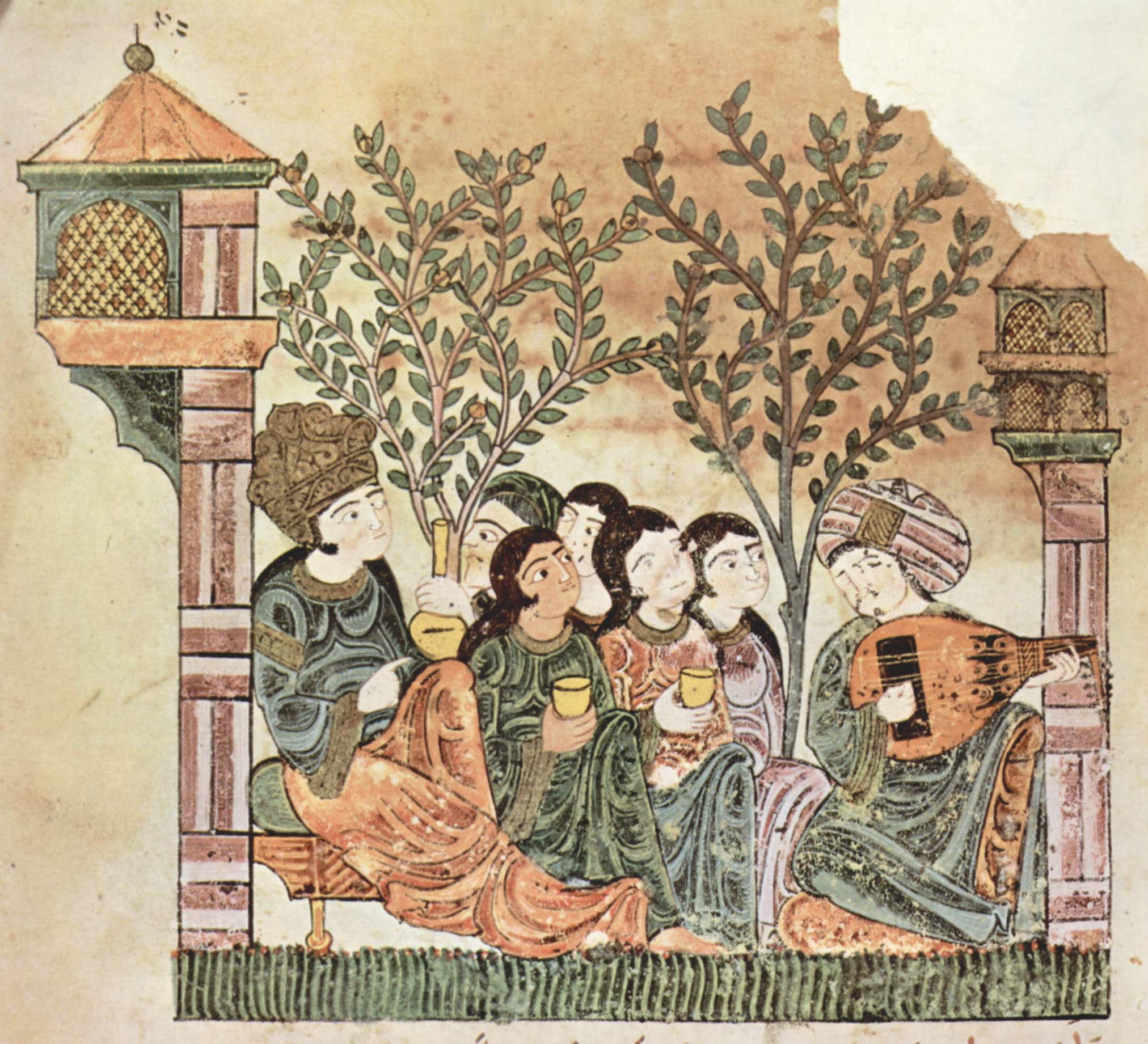 Ein olfaktorisches Konzert – 24. Februar 2017, 21 Uhr, 20 Uhr Einlass- "Damaskus - Berlin" Maria Magdalena Wiesmaier: Cello; Nabil Hilaneh: Oud - Fabio Dondero und Dominik Breider: Incense burning – Linde (Deutschland) und Cedrus Libani (Syrien) – Palais im Roten Salon in der Volksbuehne, Berlin - LINK VOLKSBUEHNE
Ein olfaktorisches Konzert – 24. Februar 2017, 21 Uhr, 20 Uhr Einlass- "Damaskus - Berlin" Maria Magdalena Wiesmaier: Cello; Nabil Hilaneh: Oud - Fabio Dondero und Dominik Breider: Incense burning – Linde (Deutschland) und Cedrus Libani (Syrien) – Palais im Roten Salon in der Volksbuehne, Berlin - LINK VOLKSBUEHNE
Incense of Music Nr. 9 – DOHA
Ein olfaktorisches Konzert - 30. Januar 2017, 20 Uhr - DOHA - Mit Gareth Lubbe (Viola, Obertongesang), Hayden Chisholm (Saxophon, Obertongesang) und Claudio Bohórquez (Cello, Obertongesang) - Fabio Dondero und Dominik Breider (Incense burning): Palo Santo und White Sage - Palais im Roten Salon in der Volksbuehne, Berlin - LINK VOLKSBUEHNE
Read more
Abelmoshus
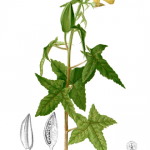 Abelmoschus is a genus of about fifteen species of flowering plants in the mallow family, Malvaceae, native to tropical Africa, Asia and northern Australia. It was formerly included within Hibiscus, but is now classified as a distinct genus. The genus comprises annual and perennial herbaceous plants, growing to 2 m tall.
Abelmoschus is a genus of about fifteen species of flowering plants in the mallow family, Malvaceae, native to tropical Africa, Asia and northern Australia. It was formerly included within Hibiscus, but is now classified as a distinct genus. The genus comprises annual and perennial herbaceous plants, growing to 2 m tall.
Abies nordmanniana
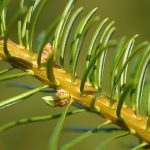 Abies nordmanniana, the Nordmann fir or Caucasian fir, is a fir indigenous to the mountains south and east of the Black Sea, in Turkey, Georgia and the Russian Caucasus. It occurs at altitudes of 900–2,200 m on mountains with precipitation of over 1,000 mm. The current distribution of the Nordmann fir is associated with the forest refugia that existed during the Ice Age at the eastern and southern Black Sea coast. Read more
Abies nordmanniana, the Nordmann fir or Caucasian fir, is a fir indigenous to the mountains south and east of the Black Sea, in Turkey, Georgia and the Russian Caucasus. It occurs at altitudes of 900–2,200 m on mountains with precipitation of over 1,000 mm. The current distribution of the Nordmann fir is associated with the forest refugia that existed during the Ice Age at the eastern and southern Black Sea coast. Read more
Acorus calamus
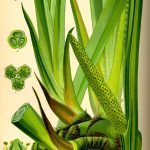 Acorus calamus (also called sweet flag or calamus, among many common names) is a species of flowering plant, a tall wetland monocot of the Acoraceae family, in the genus Acorus. Sweet flag is a herbaceous perennial, 30–100 cm (12–39 in) tall. In habit it resembles the iris, and has given its name to the flag iris, I. pseudacorus. Read more
Acorus calamus (also called sweet flag or calamus, among many common names) is a species of flowering plant, a tall wetland monocot of the Acoraceae family, in the genus Acorus. Sweet flag is a herbaceous perennial, 30–100 cm (12–39 in) tall. In habit it resembles the iris, and has given its name to the flag iris, I. pseudacorus. Read more
Aralia racemosa
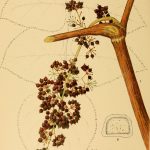 Aralia racemosa, with common names American spikenard, small spikenard, Indian root, spice berry, spignet, life-of-man, petty morel, is an ornamental plant in the family Araliaceae native to the United States and Canada. It is a herbaceous plant, about 1 to 2 m (3 ft 3 in to 6 ft 7 in) tall, which grows in shady areas. Its native range includes most of the eastern United States. The first publication of Aralia racemosa was made in 1753 by Carl von Linné. (from Wikipedia)
Aralia racemosa, with common names American spikenard, small spikenard, Indian root, spice berry, spignet, life-of-man, petty morel, is an ornamental plant in the family Araliaceae native to the United States and Canada. It is a herbaceous plant, about 1 to 2 m (3 ft 3 in to 6 ft 7 in) tall, which grows in shady areas. Its native range includes most of the eastern United States. The first publication of Aralia racemosa was made in 1753 by Carl von Linné. (from Wikipedia)
Damiana
 Turnera diffusa, known as damiana, is a shrub native to southern Texas in the United States, Central America, Mexico, South America, and the Caribbean. It belongs to the family Passifloraceae. Damiana is a relatively small, woody shrub that produces small, aromatic flowers. It blossoms in early to late summer and is followed by fruits that taste similar to figs. Read more
Turnera diffusa, known as damiana, is a shrub native to southern Texas in the United States, Central America, Mexico, South America, and the Caribbean. It belongs to the family Passifloraceae. Damiana is a relatively small, woody shrub that produces small, aromatic flowers. It blossoms in early to late summer and is followed by fruits that taste similar to figs. Read more
Guaiacum
 Guaiacum denotes a genus of the zygomatic family (Zygophyllaceae). It contains six to eight tree species from tropical and subtropical America. Guaiacum species are trees or shrubs with very hard, resin-rich wood. There are six to eight species in the genus of guaiac trees (Guaiacum) in tropical and warmer America: Guaiacum angustifolium - Mexico and Texas; Guaiacum coulteri - Mexico; Guaiacum unijungum - Baja California in Mexico; Guaiacum officinale L. - Antilles and the north coast of South America.Read more
Guaiacum denotes a genus of the zygomatic family (Zygophyllaceae). It contains six to eight tree species from tropical and subtropical America. Guaiacum species are trees or shrubs with very hard, resin-rich wood. There are six to eight species in the genus of guaiac trees (Guaiacum) in tropical and warmer America: Guaiacum angustifolium - Mexico and Texas; Guaiacum coulteri - Mexico; Guaiacum unijungum - Baja California in Mexico; Guaiacum officinale L. - Antilles and the north coast of South America.Read more
Hieracium
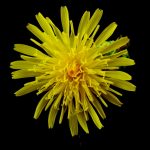 Hieracium , known by the common name hawkweed and classically as hierakion (from ancient Greek ιεράξ, hierax ‘hawk’), is a genus of the sunflower (Helianthus) family Asteraceae), and closely related to dandelion (Taraxacum), chicory (Cichorium), prickly lettuce (Lactuca) and sow thistle (Sonchus), which are part of the tribe Cichorieae. Hawkweeds, with their 10,000+ recorded species and subspecies, do their part to make Asteraceae the second largest family of flowers. Some botanists group all these species or subspecies into approximately 800 accepted species, while others prefer to accept several thousand species. Hieracium species are native to Africa, Asia, Europe, North America, Central America and South America.
Hieracium , known by the common name hawkweed and classically as hierakion (from ancient Greek ιεράξ, hierax ‘hawk’), is a genus of the sunflower (Helianthus) family Asteraceae), and closely related to dandelion (Taraxacum), chicory (Cichorium), prickly lettuce (Lactuca) and sow thistle (Sonchus), which are part of the tribe Cichorieae. Hawkweeds, with their 10,000+ recorded species and subspecies, do their part to make Asteraceae the second largest family of flowers. Some botanists group all these species or subspecies into approximately 800 accepted species, while others prefer to accept several thousand species. Hieracium species are native to Africa, Asia, Europe, North America, Central America and South America.
Lemon
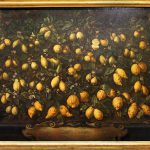 The lemon, Citrus limon, is a species of small evergreen tree in the flowering plant family Rutaceae, native to South Asia, primarily North eastern India. The tree’s ellipsoidal yellow fruit is used for culinary and non-culinary purposes throughout the world, primarily for its juice, which has both culinary and cleaning uses. Read more
The lemon, Citrus limon, is a species of small evergreen tree in the flowering plant family Rutaceae, native to South Asia, primarily North eastern India. The tree’s ellipsoidal yellow fruit is used for culinary and non-culinary purposes throughout the world, primarily for its juice, which has both culinary and cleaning uses. Read more
Myrrh
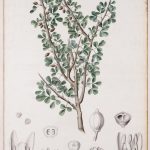 Myrrh is a natural gum or resin extracted from a number of small, thorny tree species of the genus Commiphora. Myrrh resin has been used throughout history as a perfume, incense, and medicine. Myrrh mixed with wine can also be ingested. Commiphora myrrha is native to Somalia, Oman, Yemen, Eritrea, (Somali Region) of Ethiopia and parts of Saudi Arabia. Read more
Myrrh is a natural gum or resin extracted from a number of small, thorny tree species of the genus Commiphora. Myrrh resin has been used throughout history as a perfume, incense, and medicine. Myrrh mixed with wine can also be ingested. Commiphora myrrha is native to Somalia, Oman, Yemen, Eritrea, (Somali Region) of Ethiopia and parts of Saudi Arabia. Read more
Lavandula
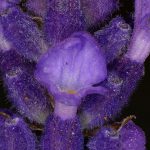 Lavandula (common name lavender) is a genus of 39 known species of flowering plants in the mint family, Lamiaceae. It is native to the Old World and is found from Capo Verde and the Canary Islands, Europe across to northern and eastern Africa, the Mediterranean, southwest Asia to southeast India. Many members of the genus are cultivated extensively in temperate climates as ornamental plants and landscape use, for use as culinary herbs, and also commercially for the extraction of essential oil. The English word lavender is generally thought to be derived from Old French lavandre, ultimately from the Latin lavare (to wash), referring to the use of infusions of the plants. The most common form in cultivation is the common or English lavender Lavandula angustifolia. Lavenders flourish best in dry, well-drained, sandy or gravelly soils in full sun. All types need little or no fertilizer and good air circulation. English lavender yields an essential oil with sweet overtones, and can be used in balms, salves, prfumes, cosmetics, and topical applications. The plant is as well used as a condiment in the kitchen and as a herb in medical treatments having an anxiolytic effect and influence in sleep quality. Lavender was one of the holy herbs used in the biblical Temple to prepare the holy essence, and nard (‘nerd’ in Hebrew) is mentioned in the Song of Solomon (4,14).
Lavandula (common name lavender) is a genus of 39 known species of flowering plants in the mint family, Lamiaceae. It is native to the Old World and is found from Capo Verde and the Canary Islands, Europe across to northern and eastern Africa, the Mediterranean, southwest Asia to southeast India. Many members of the genus are cultivated extensively in temperate climates as ornamental plants and landscape use, for use as culinary herbs, and also commercially for the extraction of essential oil. The English word lavender is generally thought to be derived from Old French lavandre, ultimately from the Latin lavare (to wash), referring to the use of infusions of the plants. The most common form in cultivation is the common or English lavender Lavandula angustifolia. Lavenders flourish best in dry, well-drained, sandy or gravelly soils in full sun. All types need little or no fertilizer and good air circulation. English lavender yields an essential oil with sweet overtones, and can be used in balms, salves, prfumes, cosmetics, and topical applications. The plant is as well used as a condiment in the kitchen and as a herb in medical treatments having an anxiolytic effect and influence in sleep quality. Lavender was one of the holy herbs used in the biblical Temple to prepare the holy essence, and nard (‘nerd’ in Hebrew) is mentioned in the Song of Solomon (4,14).
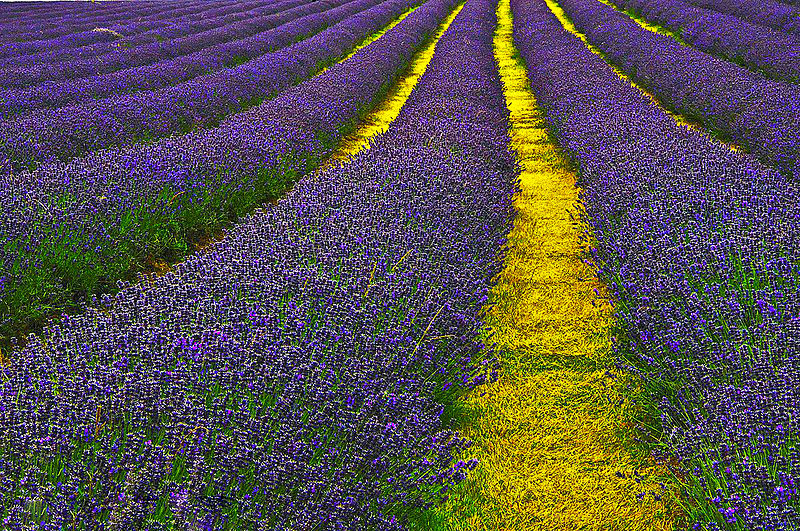
Lavandula Angustifolia, der Echte Lavendel oder Schmalblättrige Lavendel (Lavandula officinalis, Lavandula vera) ist eine Pflanzenart aus der Gattung Lavendel (Lavandula) innerhalb der Familie der Lippenblütler (Lamiaceae). Der mittellateinische Name "Lavandula" gehört zum lateinischen lavare = waschen, weil man das aromatische Kraut gern dem Waschwasser oder den Bädern zusetzte. Lavendel ist ein Lehnwort aus dem lateinischen "lavandula". Die Heimat des Lavendel sind ursprünglich die Küstenregionen des Mittelmeers. Dort kommt er an trockenen, warmen Hängen bis Dalmatien und Griechenland sowie in der Toskana in Italien weit verbreitet vor. Benediktiner-Mönche führten ihn nördlich der Alpen ein. Der Echte Lavendel gehört zu denjenigen Arten, die als winterhart gelten und daher im Freien den in Mitteleuropa üblichen Winter gut überstehen. Eingebürgert ist er bei Jena, Rudolstadt und Bad Blankenburg. Aktuell wird in Deutschland ein bescheidener Lavendelanbau in der Nähe von Detmold betrieben. Der Gebrauch des Lavendels auf den britischen Inseln geht weit zurück, denn er ist schon unter den Arzneien der Physicians of Myddvai (13. Jahrhundert) angeführt. Allerdings gilt: je kälter die Gegend, desto geruchsärmer der Lavendel. Dem Echten Lavendel wird ein breites therapeutisches Spektrum zugeschrieben. In seinem Lehrbuch der Biologischen Heilmittel (1938) sagt Gerhard Madaus: „Lavandula ist ein mildes Nervinum, das besonders bei Migräne gern gegeben wird. Man verordnet es bei Neurasthenie, Vertigo, nervösem Herzklopfen, allgemeinen nervösen Aufregungszuständen, Hysterie, Krämpfen, Ohnmachten und Schlaflosigkeit.“ Matthiolus nennt in seinem Kräuterbuch die Lavandula ein "köstlich Kraut wider alle kalten Gebresten des Hirns und der Senader/ als da ist der Schwindel/ gantze und halbe Schlag/ der fallend Siechtag/ die Schlafsucht/ Krampff/ Zittern/ Contract und Lähme".
https://vimeo.com/190195097
Neroli
 Neroli oil is an essential oil produced from the blossom of the bitter orange tree (Citrus aurantium subsp. amara or Bigaradia). Its scent is sweet, honeyed and somewhat metallic with green and spicy facets. Orange blossom is also extracted from the same blossom and both extracts are extensively used in perfumery. Orange blossom can be described as smelling sweeter, warmer and more floral than neroli. The difference between how neroli and orange blossom smell and why they are referred to with different names, is a result of the process of extraction that is used to obtain the oil from the blooms. Read more
Neroli oil is an essential oil produced from the blossom of the bitter orange tree (Citrus aurantium subsp. amara or Bigaradia). Its scent is sweet, honeyed and somewhat metallic with green and spicy facets. Orange blossom is also extracted from the same blossom and both extracts are extensively used in perfumery. Orange blossom can be described as smelling sweeter, warmer and more floral than neroli. The difference between how neroli and orange blossom smell and why they are referred to with different names, is a result of the process of extraction that is used to obtain the oil from the blooms. Read more

 Deutsch
Deutsch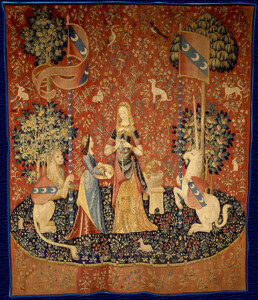
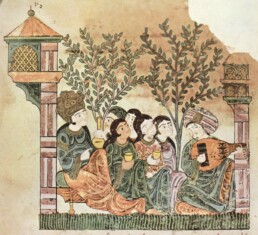

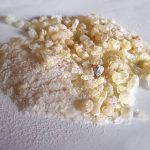 Dammar is the resin of deciduous trees from the family of the wing crops that grow in India and on the Sunda Islands in the Malay Archipelago. Dammar is also produced in Indonesia, Papua New Guinea and the Philippines.
Dammar is the resin of deciduous trees from the family of the wing crops that grow in India and on the Sunda Islands in the Malay Archipelago. Dammar is also produced in Indonesia, Papua New Guinea and the Philippines.